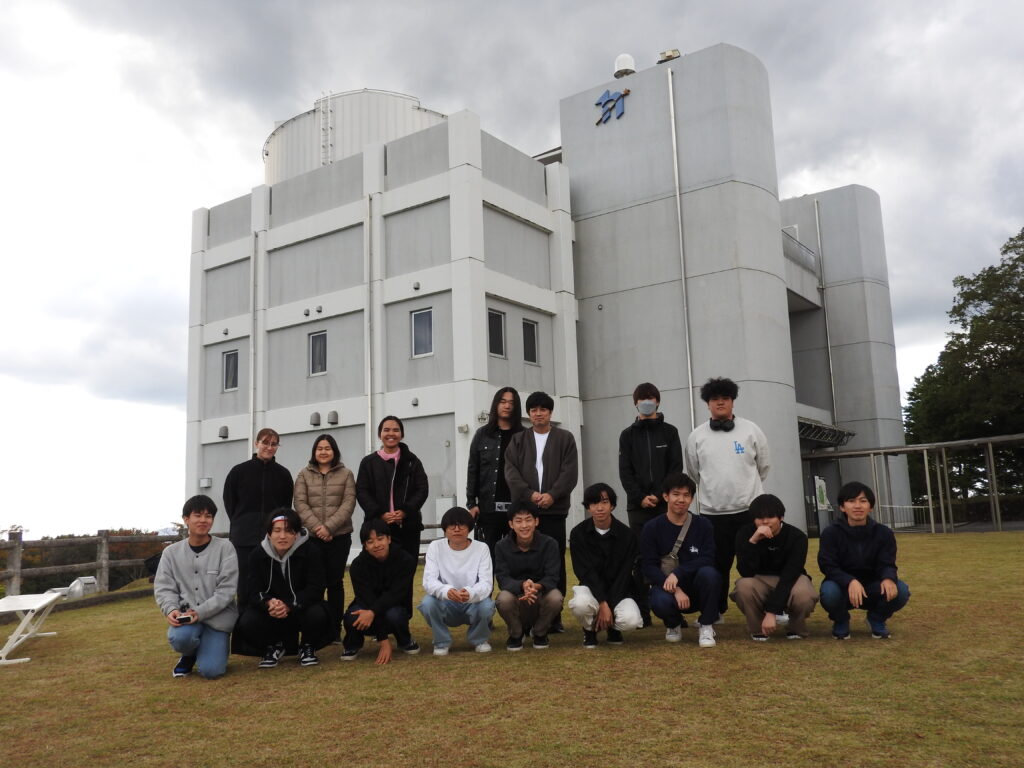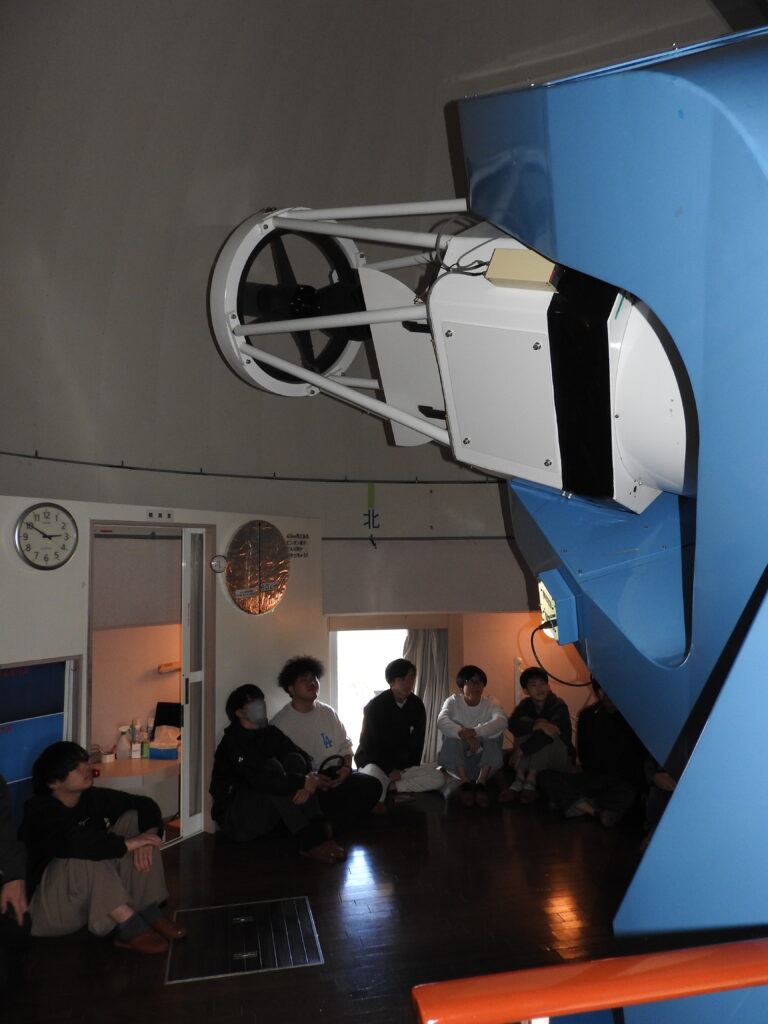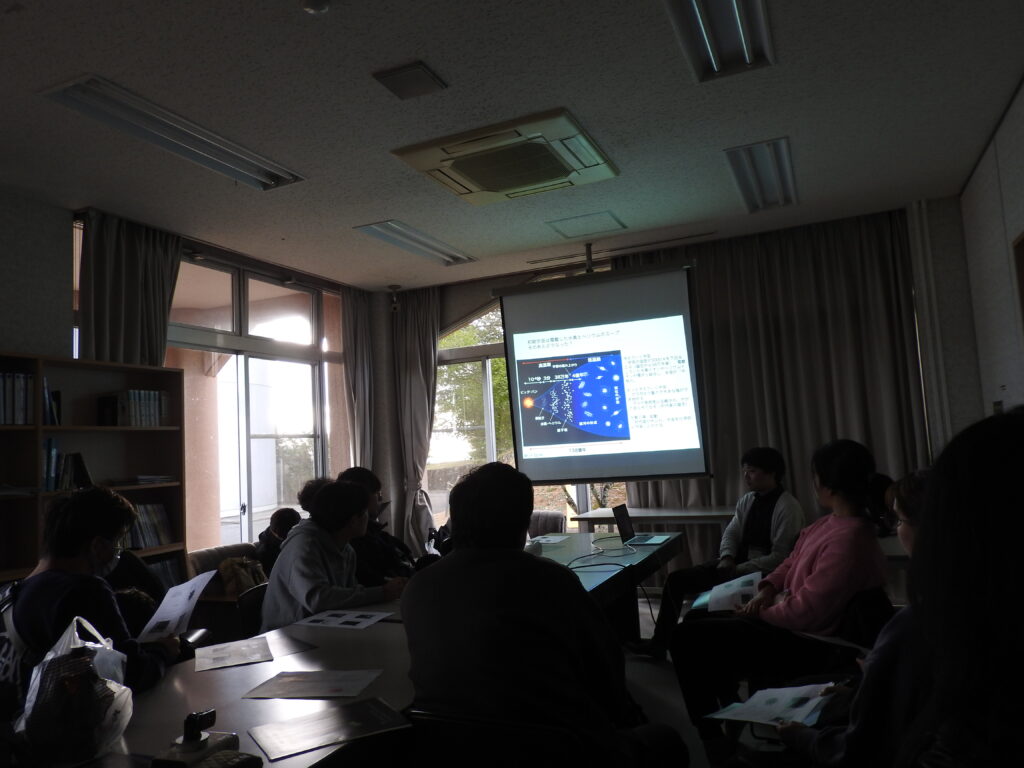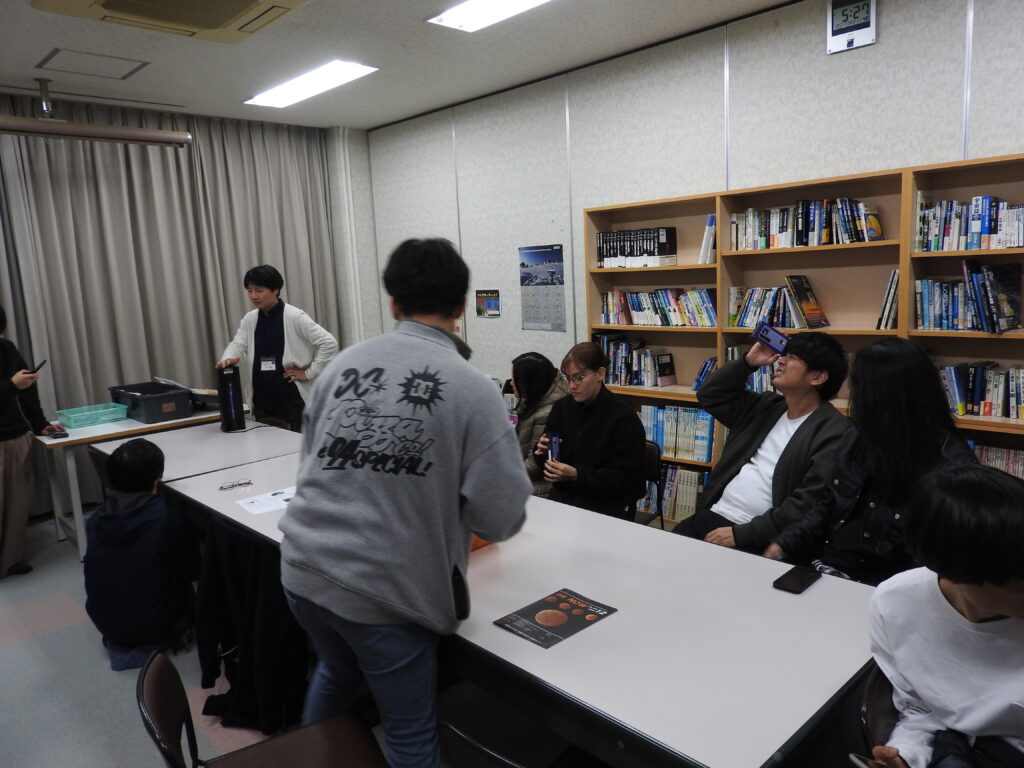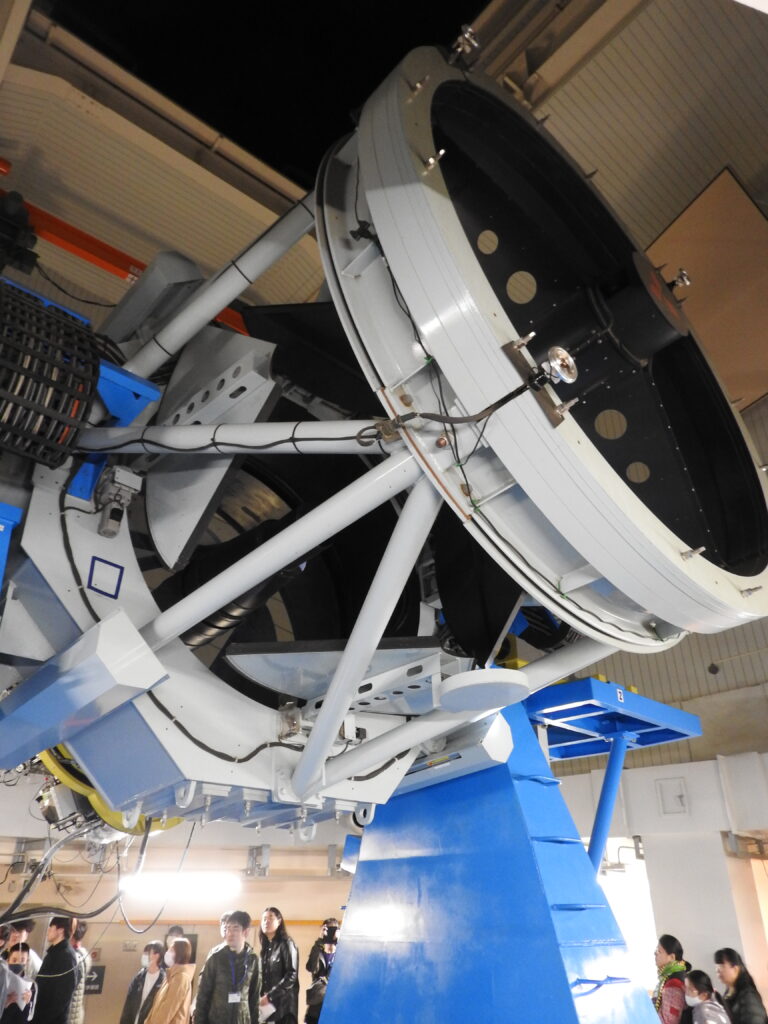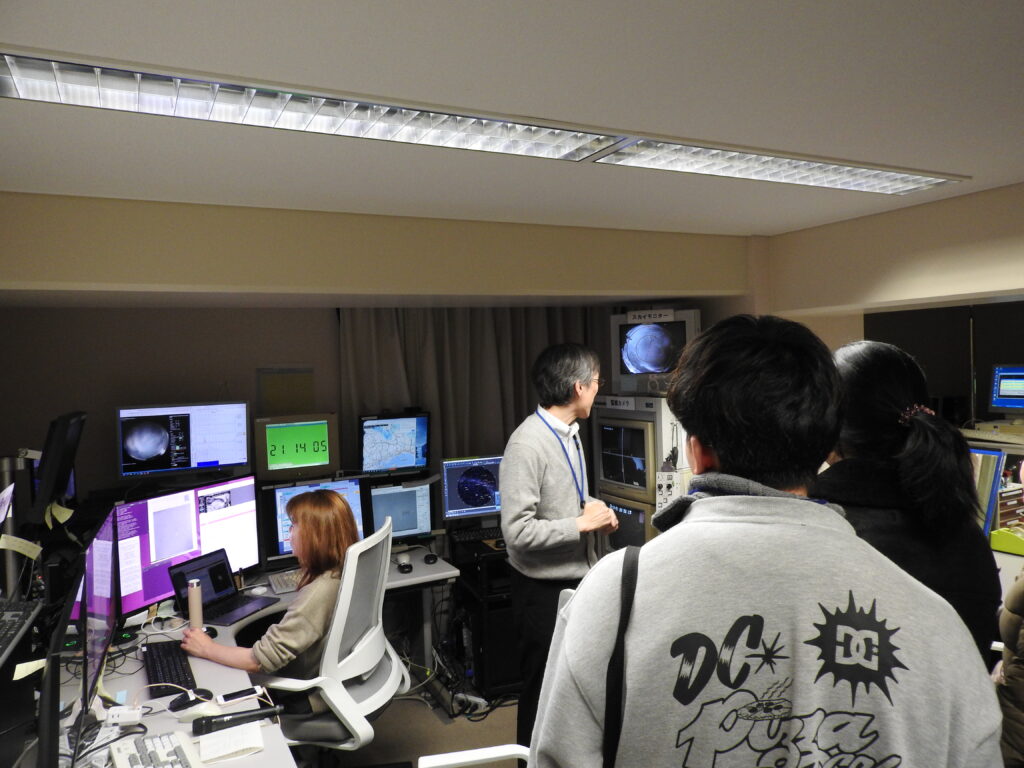On October 21st, during the Field Studio Exercise 2, four first-year doctoral students (and one TA who’s a first-year master’s student) participated in night observations using the largest domestic 2-meter telescope NAYUTA, at the Nishi-Harima Astronomical Observatory of University of Hyogo. They also engaged in daytime observations using a 60cm telescope, constructed a simple spectrometer, and received a lecture on “Stellar Evolution” from researcher Takayama, which included topics such as when gravitational waves were initially observed from electromagnetic waves (initial detection of gravitational waves from the merger of binary neutron stars) using the NAYUTA telescope.
Unfortunately, due to the persisting cloudy weather, it was not possible to observe various celestial objects like Vega, Altair, Albireo, Arcturus, Messier 15, Almach double star, the Moon, Saturn, Jupiter, Mars, the Pleiades, etc., which are usually observable(a slight glimpse of the Moon, Saturn, etc. may be viewable). However, through the tour of the observation room of the NAYUTA telescope, students gained valuable experience by hearing firsthand about the importance of clocks with an accuracy of one millionth of a second in astronomical observations, explanations about the three observation instruments (infrared, visible light, spectrometer), the observation system, and other insights into the actual research field.
